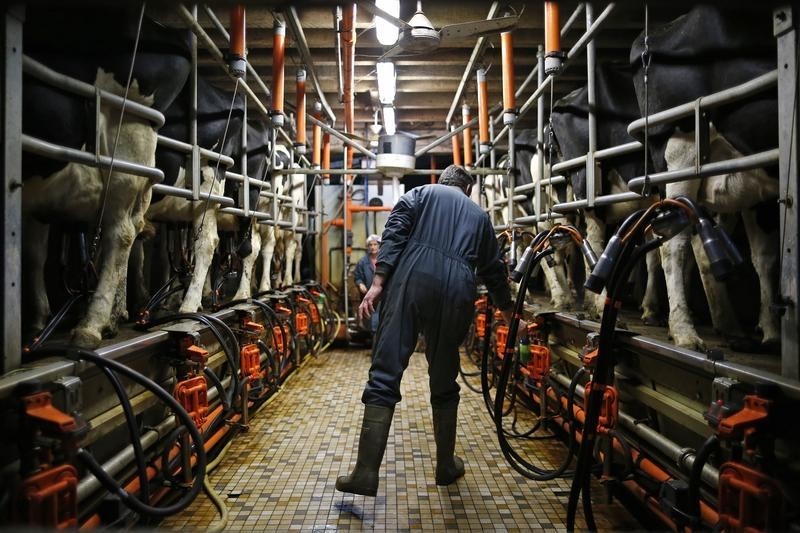By Tom Polansek and Julie Steenhuysen
CHICAGO (Reuters) – Bird flu likely circulated on a limited basis among U.S. dairy cows for about four months before federal officials confirmed the disease has now spread to nine states, according to a new federally funded research paper.
The U.S. Department of Agriculture reported the first-ever H5N1 virus infection in a Texas dairy cow on March 25, following reports of reduced milk yields in several states.
The USDA has said it believes wild birds, which can carry the virus, have introduced H5N1 to livestock. The outbreak then spread when cows were shipped to other states, according to the article released Wednesday and funded by USDA, Centers for Disease Control and Prevention and the National Institute of Allergy and Infectious Diseases.
“Data support a single introduction of the virus of wild bird origin into livestock, likely followed by limited local circulation for approximately four months prior to confirmation by USDA,” the paper said.
A team of academic scientists led by evolutionary biologist Michael Worobey of the University of Arizona pieced together raw genetic sequences released by the USDA on April 21 without dates or locations and concluded a week ago that a single transmission event occurred in late 2023.
Scientists have criticized the USDA for not releasing details of the data that will allow academic researchers around the world to track the evolution of the virus.
One person, a farm worker from Texas, has tested positive for H5N1 during the current outbreak, although the only symptom was conjunctivitis, believed to be caused by contact with cow’s milk. The CDC has said the general public is at low risk of infection.
Remove ads
.
Bird flu has long been on the list of viruses with pandemic potential, and any expansion into a new mammal species worries scientists.
Carol Cardona, a bird flu expert at the University of Minnesota, said the virus was able to spread during the four months it went undetected.
“By the time the outbreak was recognized, we were beyond our ability to contain the outbreak,” she said.
Veterinarians have observed from January that dairy cattle showed unexplained drops in milk production and changes in milk quality, along with reduced feed consumption. It was published in an open access preprint
server for the biological sciences called bioRxivon.
Members of USDA’s network of disease monitoring laboratories identified the influenza A virus, including bird flu, in milk and nasal swabs from cows at a Texas dairy farm, the newspaper said, without specifying a date.
They forwarded samples to the USDA’s National Veterinary Services Laboratories, which respond to animal health emergencies, for testing while epidemiological investigations continued elsewhere, the newspaper said.
USDA did not immediately respond to a request for comment.
“Overall, it’s great that this data has been shared,” virologist Angela Rasmussen of the University of Saskatchewan’s Vaccine and Infectious Disease Organization, who worked with Worobey on sequencing the virus, said in a post on X.


